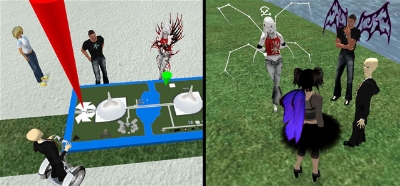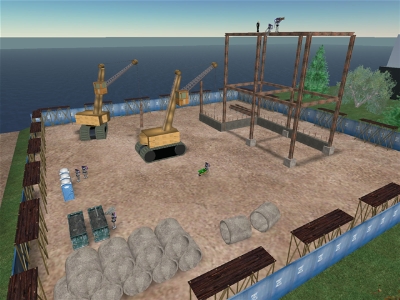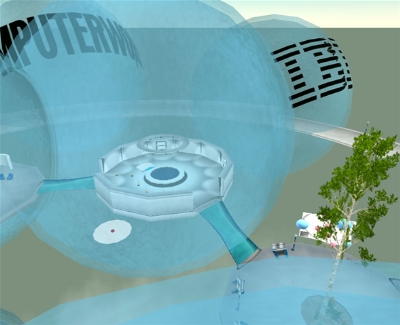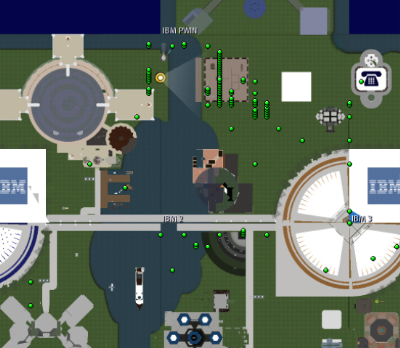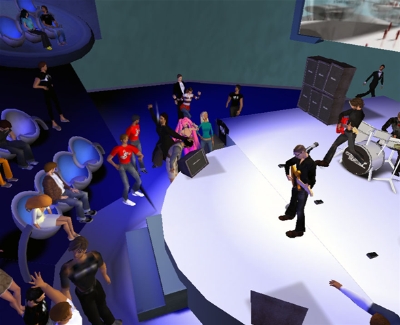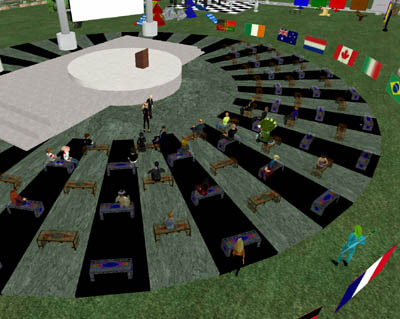I know I’m not the first blogger to mention this (even on Eightbar I’ve been beaten. Twice. ) but… Sony’s keynote at the Games Developer Conference was pretty fascinating.
Opening by putting the future of the games industry in the context of Web 2.0, Sony introduced us to a new Noun X.0, ‘Game 3.0’. Apparently, it’s…
“all about the connected device … empowered by audiences and powered by dynamic content, powered by active communities built on open standards”.
Yes. Of course. Sony gets it. I especially the tip of the hat to open standards.
Later summarised as being a “new era of creativity, collaboration, communication and commerce” (4 Cs; I’m a sucker for a memorable soundbite), the biggest and best example given of ‘Game 3.0’ in action was Playstation Home. It’s an avatar-based 3D virtual world. Home is not a product, it’s a free service. In fact, it’s a “3D social networking service”. Home provides the user with a customisable avatar, and a user interface which includes a virtual PSP as part of the controller metaphor.
Each user will have access to both private and public spaces, as well as a personal hall of fame with 3D trophies (optionally involving video). Communication options include:
- quick chat (phrase choices)
- virtual keyboard (on screen keyboard.. “ho”)
- USB keyboard
- voice chat
- animations
All very nice. But where does the content come from then? Well, it’s a combination of premium content, which users will pay for, and free items that will be delivered by game developers, game publishers, and Sony themselves; the personalisation is delivered not through custom, or user generated content, but by provided content which is either purchased or unlocked by buying games.
Despite the heavy Sony influence in the 3D content used in the demonstration (which included dropping a Sony Bravia television down the stairs)…
“Home is not just about Sony brands and Sony games, it is a much wider network of connected spaces. … Individual spaces dedicated to either games publishers or to game developers or to individual titles.”
Just game content then?
Over time this will extend beyond the game arena to include non-game brands as well. So you can imagine a location built around a famous coffee company or a famous drinks company, clothing company, record company, retailer, magazine, you can get the idea as this will build out.”
Right. But how is the content created?
“This is very very simple to build. As game developers, as content creators you can reuse content that you’re designing for your own games. It’s all using Maya. It’s really simple to build the 3D spaces and we will be providing you with the tools and the SDKs to unlock this and to maximise this. Any surface can be tagged as video. Any surface can be powered by HTML pushed from websites, and you can have individual areas dedicated to games. The way you want to design it as developers is entirely up to you.” … “All of these things are really simple really easy really powerful ways to build community and socialisation around your game brands”
I still have this nagging question. What about user generated content? Am I wrong in thinking that part of what makes something like Second Life so popular is the freedom for every user to create anything they want? Sure, they might not all be builders, but Sony: why are you limiting the building to your partners? What about the creativity of the end users?
In the second half of the keynote we are introduced to LittleBigPlanet from Media Molecule (the makers of Rag Doll Kung Fu). I really like this. Seriously fun-looking play, with user content in spades. More words than I can write at videogamesblogger, joystiq, kotaku and more.
Now this is more like it. I’m sure the palette will still be a bit limited, but the community which will no doubt build up around this with users creating cool levels to out-do each other is going to be fun to watch.

